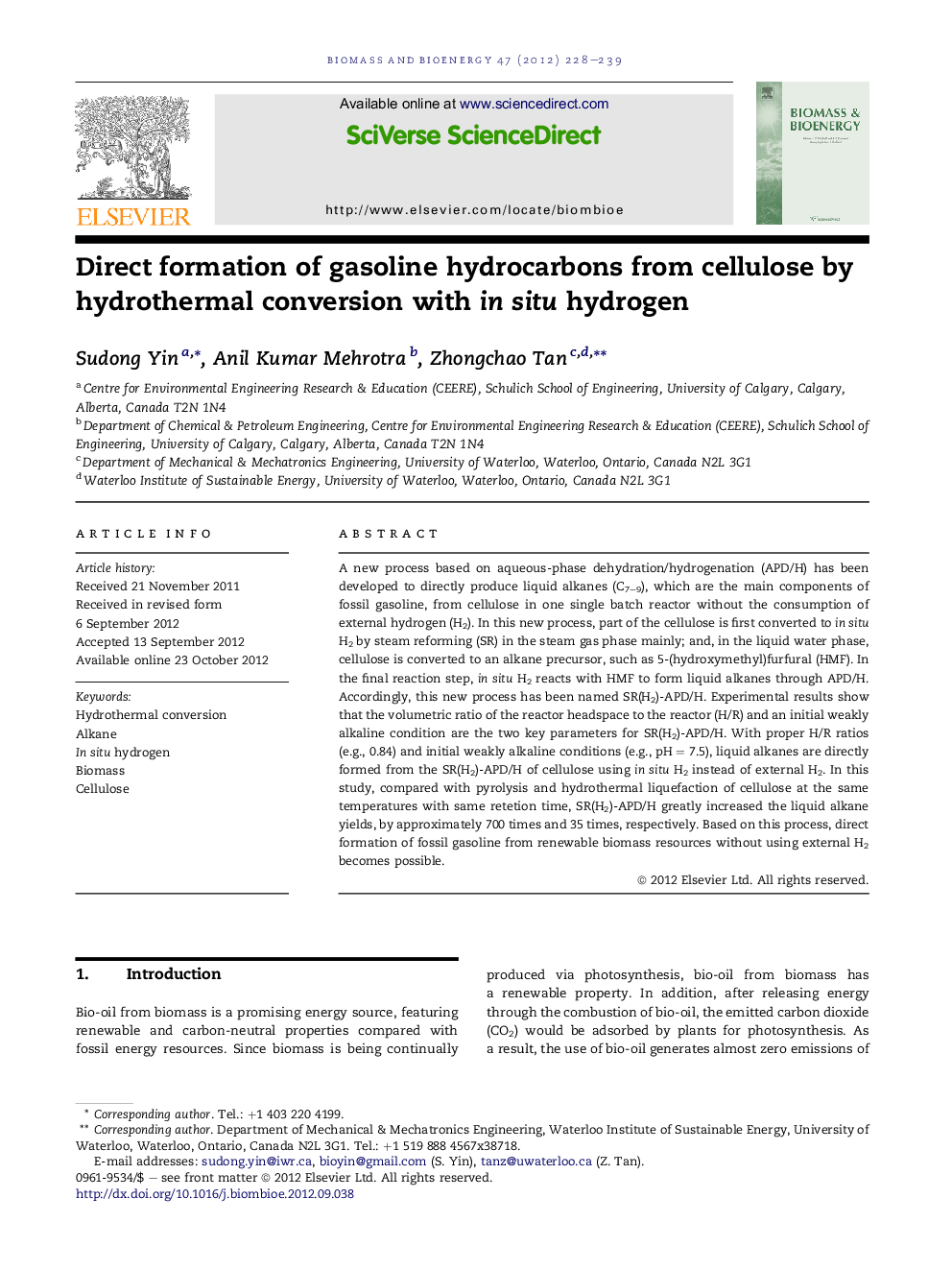| Article ID | Journal | Published Year | Pages | File Type |
|---|---|---|---|---|
| 677278 | Biomass and Bioenergy | 2012 | 12 Pages |
A new process based on aqueous-phase dehydration/hydrogenation (APD/H) has been developed to directly produce liquid alkanes (C7–9), which are the main components of fossil gasoline, from cellulose in one single batch reactor without the consumption of external hydrogen (H2). In this new process, part of the cellulose is first converted to in situ H2 by steam reforming (SR) in the steam gas phase mainly; and, in the liquid water phase, cellulose is converted to an alkane precursor, such as 5-(hydroxymethyl)furfural (HMF). In the final reaction step, in situ H2 reacts with HMF to form liquid alkanes through APD/H. Accordingly, this new process has been named SR(H2)-APD/H. Experimental results show that the volumetric ratio of the reactor headspace to the reactor (H/R) and an initial weakly alkaline condition are the two key parameters for SR(H2)-APD/H. With proper H/R ratios (e.g., 0.84) and initial weakly alkaline conditions (e.g., pH = 7.5), liquid alkanes are directly formed from the SR(H2)-APD/H of cellulose using in situ H2 instead of external H2. In this study, compared with pyrolysis and hydrothermal liquefaction of cellulose at the same temperatures with same retetion time, SR(H2)-APD/H greatly increased the liquid alkane yields, by approximately 700 times and 35 times, respectively. Based on this process, direct formation of fossil gasoline from renewable biomass resources without using external H2 becomes possible.
► A process of producing gasoline alkanes from cellulose was proposed and studied. ► Alkane precursors and in situ H2 were formed simultaneously in a single reactor. ► Alkanes subsequently formed by reactions between in situ H2 and alkane precursors. ► The yields were 700 and 35 times higher than pyrolysis and hydrothermal conversion.
